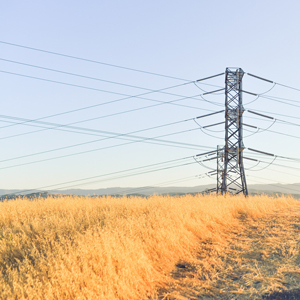In early April, the California Water Association (CWA) submitted comments on two Order Instituting Rulemakings (OIRs) before the California Public Utilities Commission (CPUC).
OIR 18-12-005 examines rules allowing CPUC-regulated electric utilities to de-energize power lines when imminent or predicted weather and wildfire conditions could materialize and threaten life or property in California. CWA’s comment letter requested modifications to the scope of the proceeding such that the consequences of de-energization events on the ability of water utilities to prepare their equipment for firefighter support be considered.
The letter called for priority notification to water service providers, identical to the notice given to local governments, public agencies, and first responders, in advance of de-energization events. This will help ensure water service availability during emergencies, such as wildfires, and “help water and wastewater agencies minimize impacts to water supplies.”
CWA also asked that electric utilities be responsible for “publishing a Geographic Information Systems Representational State Transfer service articulating the geographic boundaries of the areas subject to de-energization.” This would allow water utilities to geo-locate the components and functions of their water systems that will be affected and determine where to send personnel as well as procure back-up electricity generation to guard against the interruption of water service. CWA also recommended changing the definition of “critical facilities” to include all infrastructure used to pump, divert, transport, store, treat, and deliver water.
CWA’s comment letter on the CPUC’s OIR 17-06-024, Water Sales Forecasting and Rising Drought Risk Staff Report, expressed appreciation that the Staff Report “properly observes the water utilities’ goal of achieving more accurate forecasts, rather than simply ‘reduced’ or more ‘conservative’ estimates – notwithstanding the fact that current climate trends and regulatory developments generally support lower customer usage.” CWA noted that “the goal for the water utilities, their customers, and the Commission is, and should continue to be, forecasts that match actual sales as closely as possible.” However, the comments stated that CWA does not believe the CPUC needs to implement any industry-wide reforms with respect to sales forecasting, as those issues are better addressed on a case-by-case basis in individual rate-setting proceedings. The letter concluded with four technical corrections to ensure clarity and consistency in the Staff Report.





